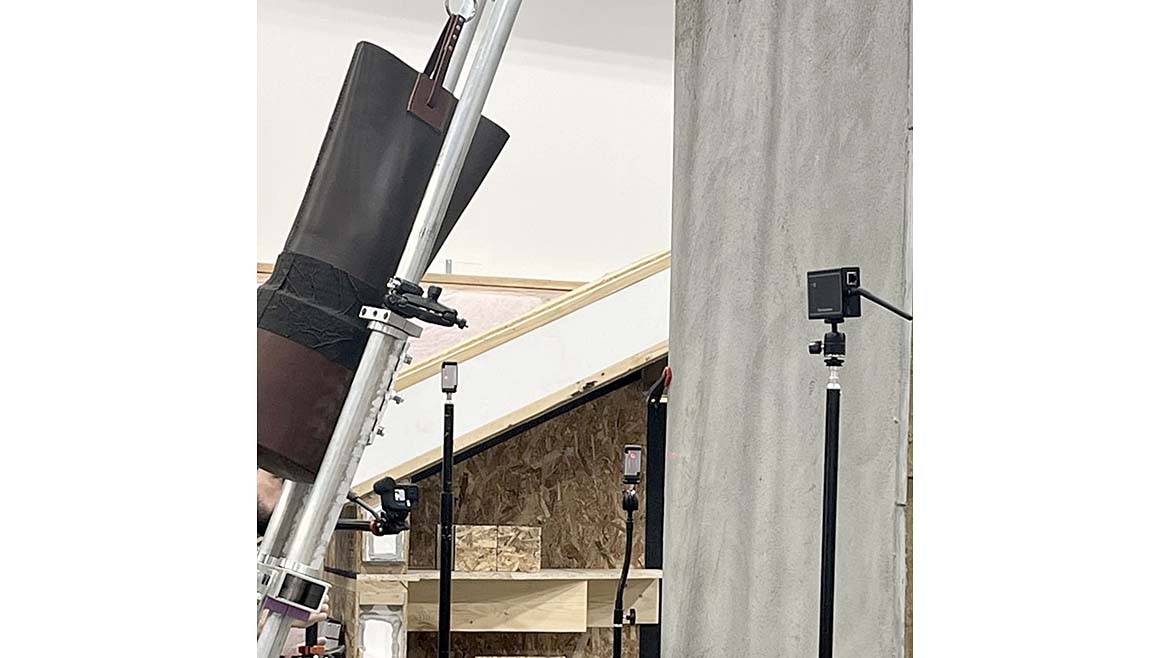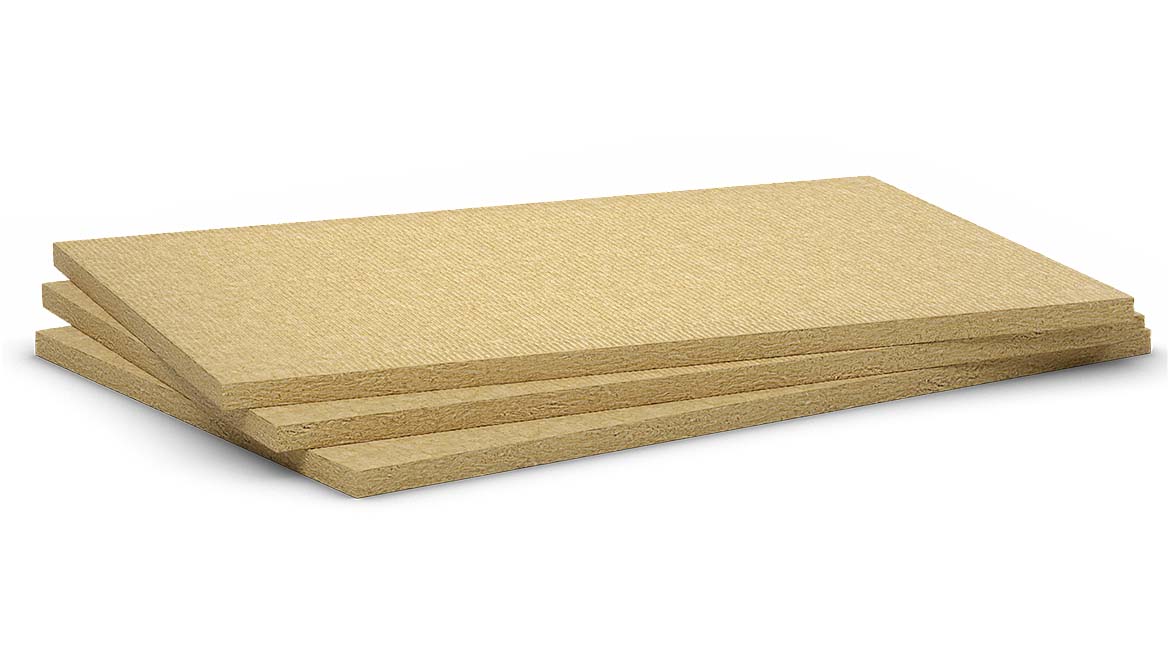Stucco Cladding: A Modern Approach With Stone Wool
Explore the fire safety, durability and moisture management advantages integrating stone wool continuous insulation in stucco systems.

Stucco has a long-standing history as a preferred cladding material due to its aesthetic appeal, codified fire ratings, and durability. Today, various types of stucco cladding options are available in the market. With the increasing adoption of energy codes requiring continuous insulation—insulation that is continuous across all structural members without thermal bridges other than fasteners and service openings—insulated stucco assemblies are now widely utilized. According to a 2019 market study by the Stucco Manufacturers Association, it is projected that over the next decade, two-thirds of stucco used in the U.S. will be an insulated system.
Emerging from the energy crisis of the 1970s, proprietary stucco, often referred to as one-coat stucco, began incorporating foam plastic insulation for enhanced energy efficiency along with a fiber-reinforced cementitious outer coating. Modern proprietary stucco systems can mitigate many of the complexities and risks associated with traditional stucco, offering high-quality results in less time and at a lower cost through a specified system approach. These systems have gained significant acceptance in the United States, particularly in the Southwest and South-Central regions.




Mineral Wool for CI
While rigid foam plastic insulation is commonly used for exterior-insulated stucco assemblies, rigid mineral wool is a viable alternative as an insulation substrate for cement stucco claddings. Stone wool products for stucco applications are noncombustible, and therefore do not trigger NFPA 285, Standard Test Method for Evaluation of Fire Propagation Characteristics of Exterior Wall Assemblies Containing Combustibles. Additionally, noncombustible mineral wool may eliminate the need to encapsulate the board with lath and stucco at openings, potentially reducing labor and installation time at fenestrations.
Stone wool provides a high-density, rigid substrate for the keying of plaster and is vapor permeable (>30 perm when tested in accordance with ASTM E96), which increases the drying potential of the assembly. Widely used in Europe with cement plaster, stone wool has proven effective as a continuous insulated cladding with noncombustible benefits. Similar to cement in its noncombustible and dimensionally stable properties, stone wool is recognized by several proprietary stucco manufacturers in North America for use within their systems.
The SMA has reviewed third-party test reports of cement plaster over mineral wool panels and recognizes this as a viable practice that specifiers and applicators can confidently adopt. It is important to adhere to specific manufacturer report holder’s details when working with proprietary one-coat stucco.
Design & Installation Considerations
Fire Resistance
Noncombustible stone wool insulation boards used in stucco systems do not produce toxic smoke or promote flame spread. They can be part of proprietary one-coat stucco cladding assemblies tested in accordance with ASTM E119, Standard Test Methods for Fire Tests of Building Construction and Materials. This includes the industry's first 100% load-bearing (unrestricted) 1-hour fire-rated continuous insulated assembly over a minimum 3/8-inch basecoat and a minimum 1/8-inch finish coat thickness per ASTM C926, and a minimum 20-ga. self-furring lath secured to wood framing per ASTM C1063, Standard Specification for Installation of Lathing and Furring to Receive Interior and Exterior Portland Cement-Based Plaster.
The International Wildland-Urban Interface Code and California Chapter 7A cover materials used in new buildings within WUI areas, as defined in Section 702A of the California Building Code. Stone wool under cement stucco is likely to be a preferred cladding for noncombustible and CI energy requirements, particularly in growing WUI zones. Predictions from the University of Nevada, Las Vegas and FEMA indicate that up to 35 percent of all residential housing in the U.S. will be in WUI zones, making fire-resistant cladding a major consideration in the design and construction process.
Moisture Management
Independent third-party testing has verified that 1” rigid mineral wool over a water-resistive barrier meeting or exceeding Grade D 60-minute building paper provides compliance with the >90 percent drainage efficiency requirements from Annex A2 of ASTM E2925. This means that cement plaster over rigid mineral wool complies with all Climate Zones outlined in the 2021 International Building Code Section 2510.6 and the International Residential Code Section R703.7.3 without needing a separate drainage mat.
Durability
- UV Exposure: Testing shows no significant change in compressive strength, water absorption, or thermal resistance of stone wool insulation.
- Impact Resistance: Evaluated per ASTM E695, stone wool substrate demonstrates resilience to impacts with an ability to rebound.
- Termite Resistance: Testing according to ASTM D3345-74 and American Wood Protection Association E1-09 shows that stone wool meets or exceeds the performance of standard preservative-treated wood.
- Coefficient of Expansion: Stone wool’s expansion coefficient closely matches that of steel and concrete, providing a stable substrate.
(Image based on study “Dimensional Stability of Rigid Board Insulation Products” conducted by RDH Building Science.)
Cement plaster should be mixed and applied per SMA or proprietary one-coat stucco manufacturers' recommendations. For any concerns regarding the use of cement plaster over mineral wool panels, contact the SMA for guidance.

Quick Facts about Rigid Mineral Wool for Stucco Cladding
- R-value: 4.0 to 4.2 per inch
- Moisture: Passed Annex A2 of ASTM E2925 for 90 percent drainage efficiency
- Impact resistance: Tested in accordance with ASTM E695, Standard Test Method of Measuring Relative Resistance of Wall, Floor, and Roof Construction to Impact Loading.
- Fire Resistance: Noncombustible, with assemblies that are NFPA 285 compliant, passed ASTM C411, Standard Test Method for Hot-Surface Performance of High-Temperature Thermal Insulation. This includes the industry’s first 100 percent load bearing (unrestricted), 1 hour fire-rated assembly with sheathing and a separate 1 hour fire-rated assembly over open framing. One mineral wool manufacturer has secured approval within the California State Fire Marshal’s Building Materials Listing Program.
*Contact manufacturer’s for specific testing information
Looking for a reprint of this article?
From high-res PDFs to custom plaques, order your copy today!






